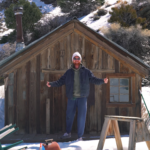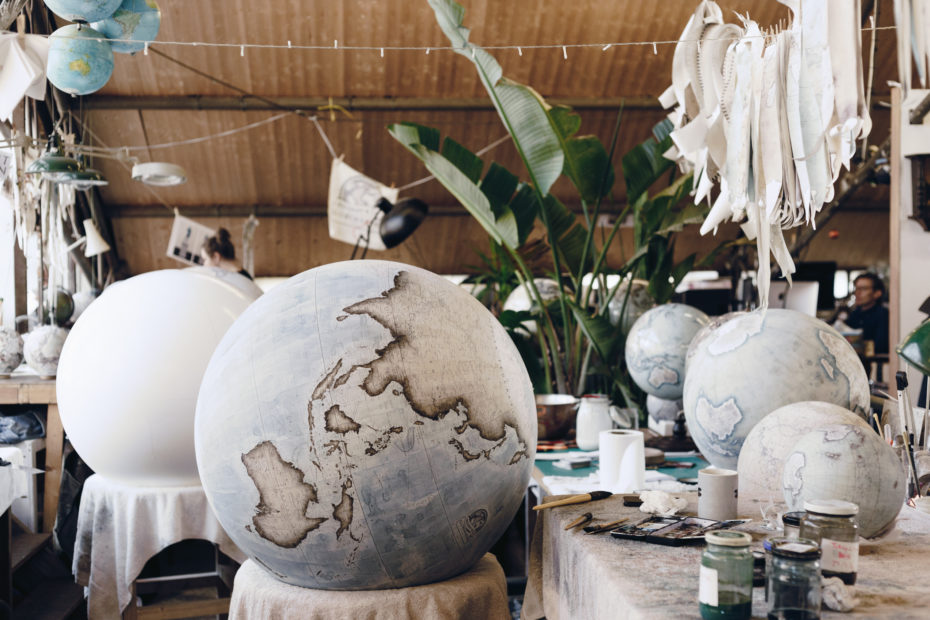
Got your passport handy? Today, we chat with the founder of London’s Bellerby & Co., one of the world’s last remaining globemakers. Fancy a globe the size of a comet? They can make it. How about one crawling with medieval monsters or detailing the route of the Silk Road? You bet. Co-founder Peter Bellerby kindly gave us a virtual tour of their London atelier this week, and it felt every bit like stepping inside Jules Verne’s brain. We wanted to know what it takes to create the largest bespoke globe in the world. What has globemaking taught them about travel? And do they have any thoughts on flat earthers?
We’ve edited some of the interview’s highlights to whet your appetite…
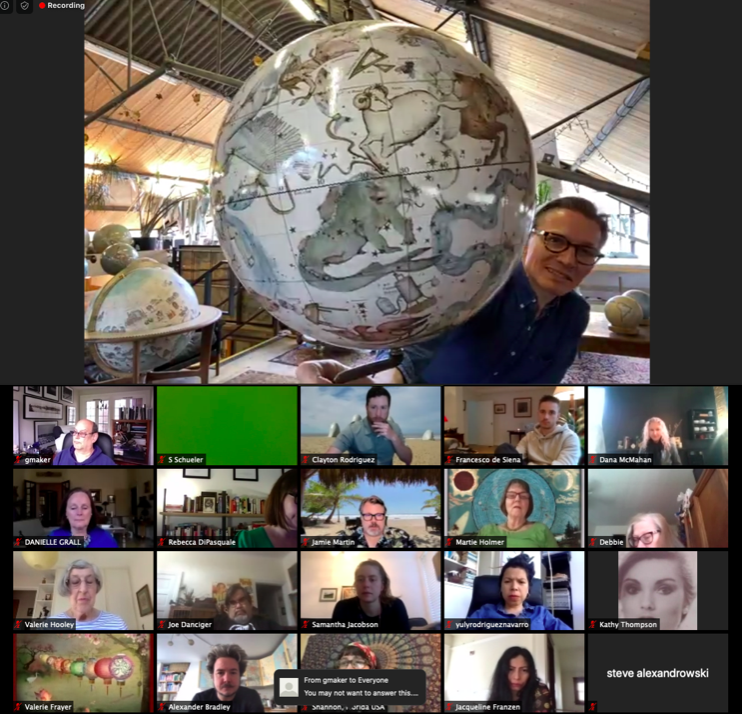
Messy Nessy Chic: Welcome! It’s a real treat to have you. We’ve been following Bellerby & Co and your goings-on in the studio for quite a few years. Can you walk us through the company’s early days? I read somewhere that it started because you were looking for a globe for your dad’s birthday.…
Peter Bellerby: Yes it did all start with a quest to find a globe for my father’s 80th birthday gift. Although I didn’t quite get it to him in time and I didn’t give him the first globe I made either. I gave him the third or the fourth one [laughs]. And now, here we are, coming up to a decade of trading!
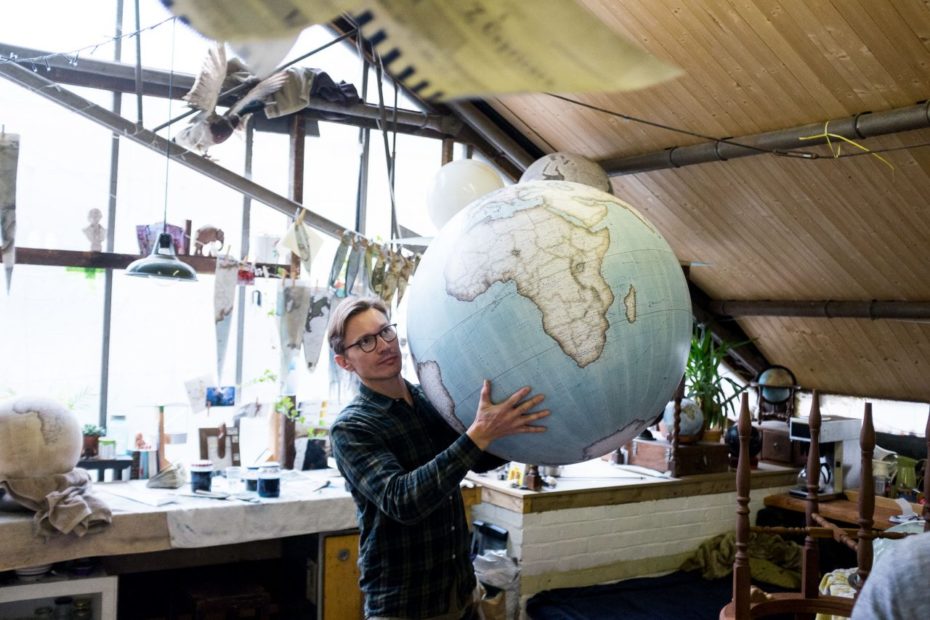
MNC: How do you go from making a globe for your dad’s birthday, to creating a business of globemaking? What made you make that jump?
PB: Easy – you don’t have any control over the budget that you’re spending on making a one-off gift. Had I restricted myself to making just the one globe, it would’ve cost between £150,000-£250,000. Part of the reason I set up the business was to try and actually get some of the money back [from that project], because I’d spent so much (and wasn’t taking a salary for two years while working it all out). It just became a business by virtue of the fact that I did feel it was quite a good idea after I’d made one. I thought, “Well, this is the nicest one I’ve seen and I’m really pleased – so hopefully other people will like them.”
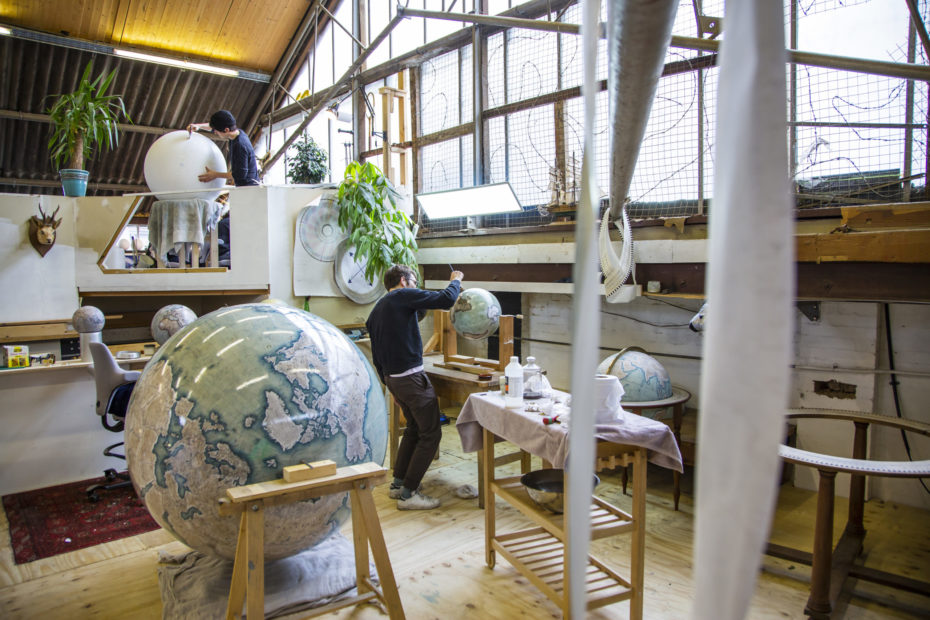
MNC: The studio we can see you sitting in now – was this the studio from day one?
PB: No, no – the studio to begin with was my dining room and kitchen. Then it became a studio I rented off an artist. They got bored of all the clouds of smoke from the plaster of Paris, so then I got a little shop which is two streets away from here, and then eventually I moved into here in 2011. I’ll show you around the studio, it’s 20 metres squared on two levels so it’s enormous.
MNC Audience Member: Can customers come into the atelier before deciding to make a purchase?
PB: Oh, we encourage it! I think it’s really exciting to involve customers so much in the process.
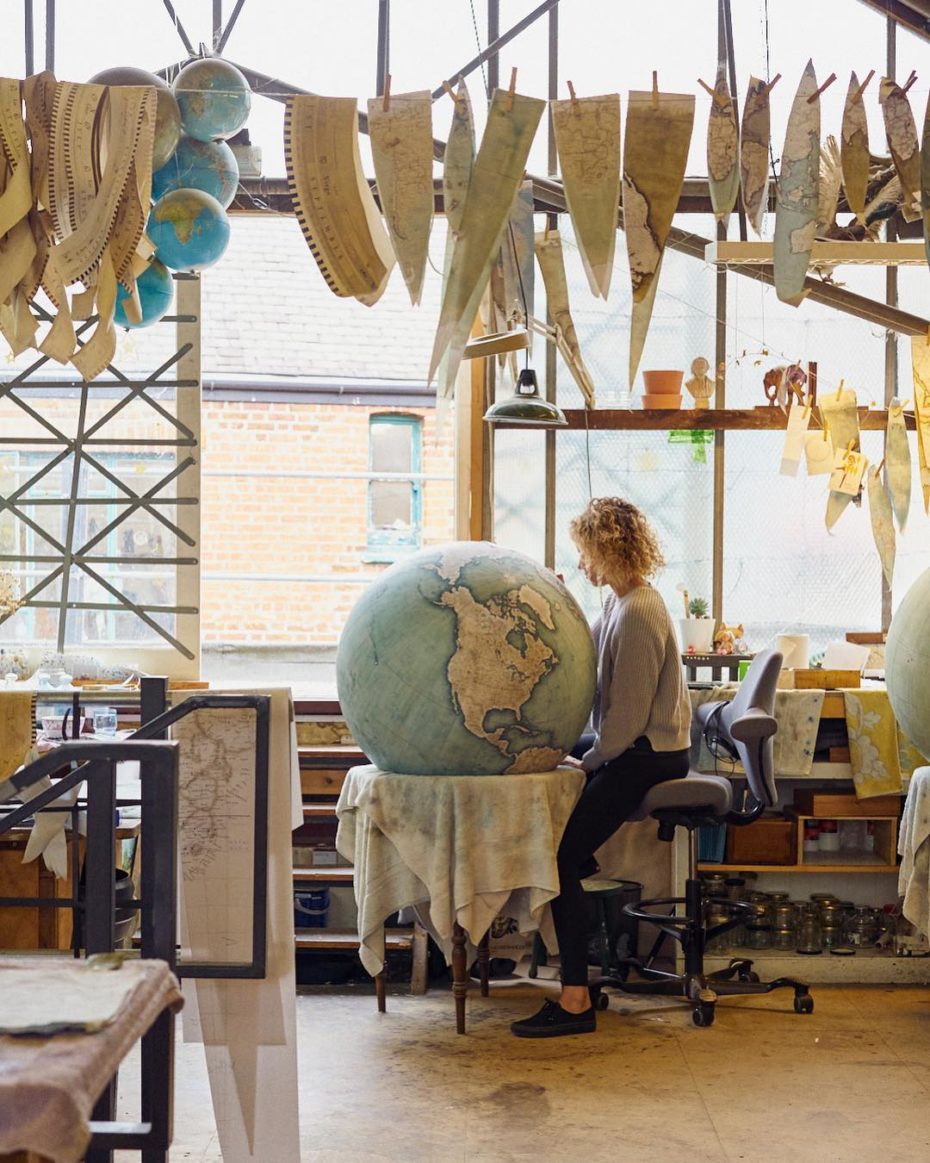
MNC: How many people are in the company?
PB: About 18. We’ve got about just under half the company working during the lockdown. And then the other half are at home, courtesy of Her Majesty’s government.
MNC: Curious as to how many of your employees are women…
PB: It’s probably about 60-70% women on our team.
MNC: Do you also consider yourself as one of the only schools of globemaking today?
PB: There are other people making them, but the thing about globemaking is there are secrets that I would never tell anyone. There are things I’ve learned in the process, and I’m sure there are other people who have secrets that they have learnt. Once you’ve kind of spent all this and effort working it out, you don’t necessarily want to give that information out for free. In a way we are a school in that sense.
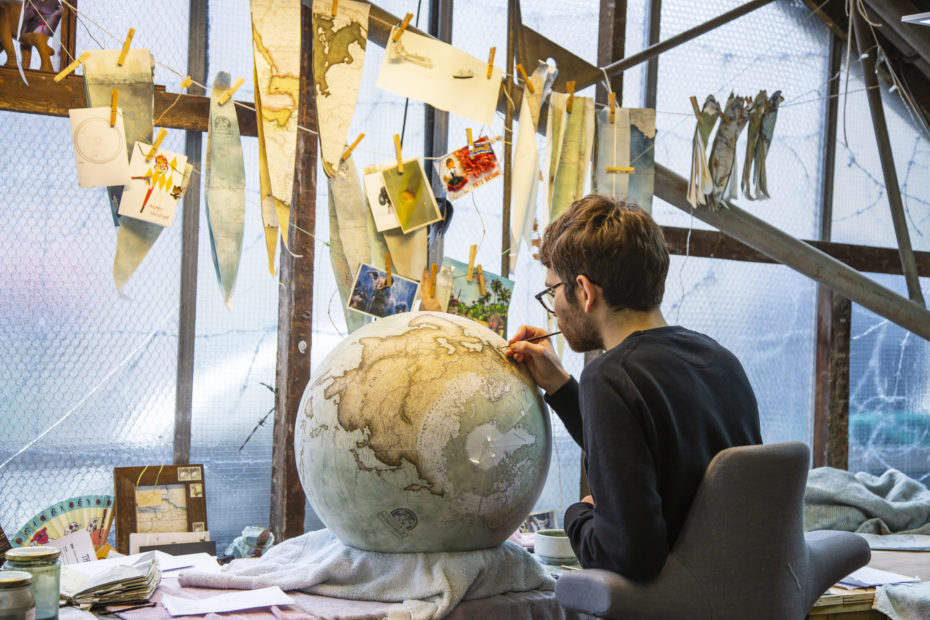
MNC: You have a globe called “The Churchill” that is the largest handmade world globe available for commission, at over 1.5m high. Is it named because Winston Churchill had a globe of that size?
PB: Kind of, yes. I’m not quite sure of the precise size of his. The US Army made two globes in 1942: one for Franklin D. Roosevelt and one for Churchill – I suppose we could’ve named it the Roosevelt [laughs].
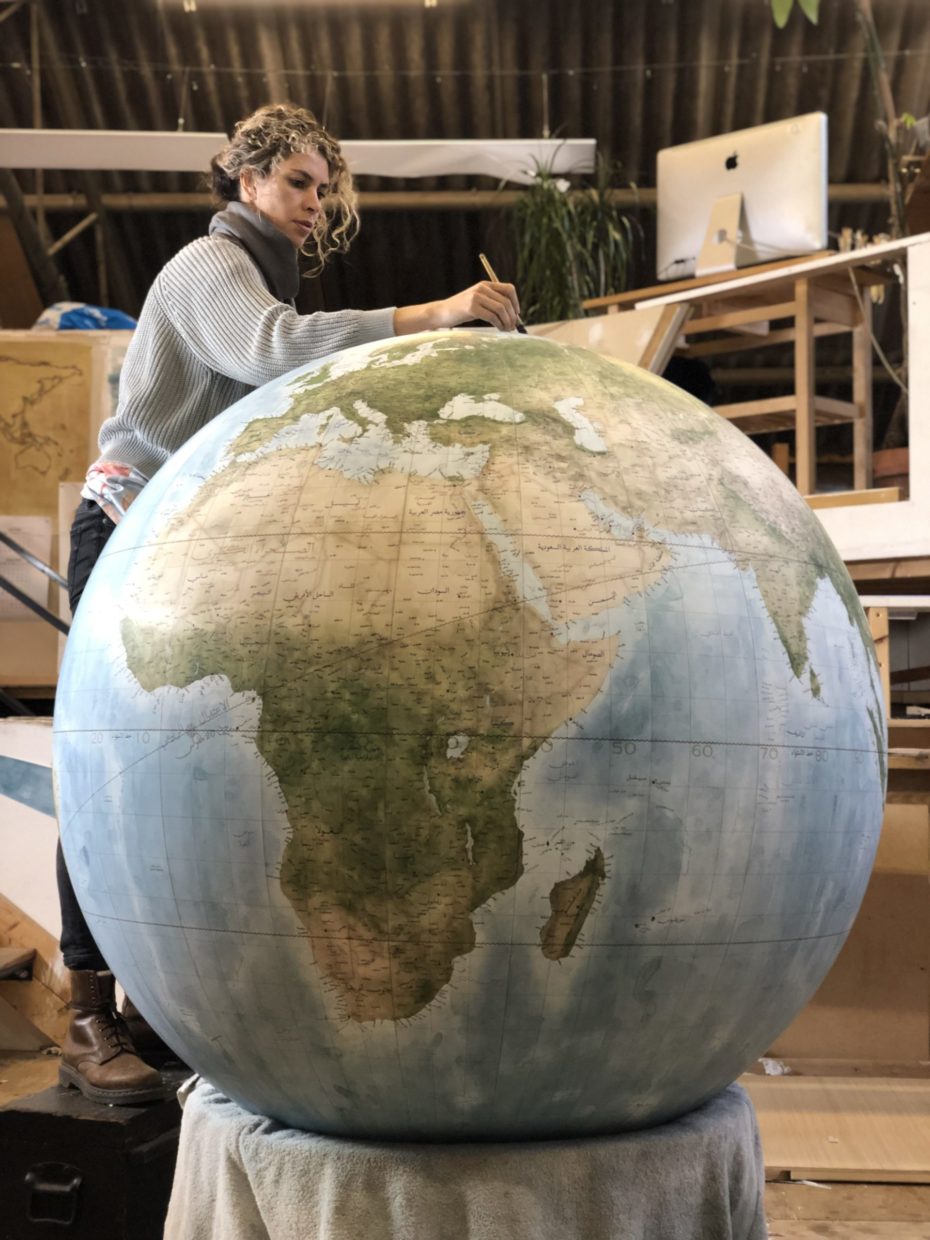
MNC: We obviously live in a digital age. What keeps globe making going in that world, where maps are at the touch of a fingertip?
PB: The crucial thing about digital mapping – and it’s amazing, it’s amazing to get you from A to B…but you don’t go on Google Earth or a mapping program to inspire yourself to travel somewhere. I think there’s just too much information. It’s crazy. A globe is something much more of a reflective type of experience. I think there will always be a market for globes for that reason. You can see the whole world in one, in entirety, in front of you. I think that’s really important. And I think in these times, where we are worried so much about the globe as well it really puts it all into perspective.
MNC: What are some exciting commissions you’ve had?
PB: The large one to my right is the “Silk Road” globe. I don’t know if you can see [shifts camera to globe] the Silk Road going through Arabia across to the Far East there. This has taken about a year-and-a-half from inception – we’ve literally completed this two days ago. So we’re really pleased.
We’ve done all sorts of globes. We do globes for artists that are completely random and have nothing to do with the world – they’re just a sphere that has 12 panels of paper attached. We’ve done globes in egg shape before. The lovely thing about what we do, is that when people ask us to do odd things we on the whole say yes and then try and work out how to make it later. Doing new and interesting things is the most exciting thing about what we’re doing and a lot of research goes in to each and every one. No two globes are the same.
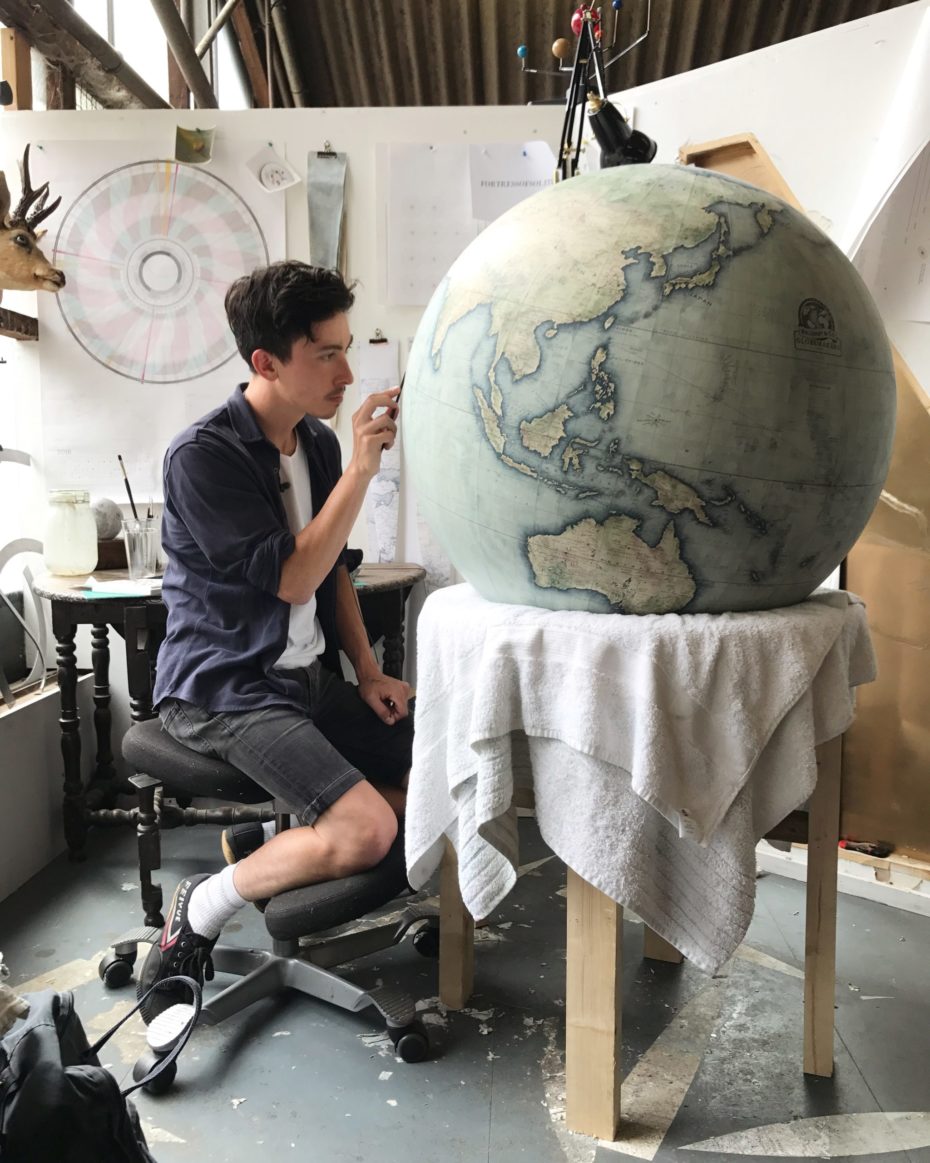
MNC: We heard that Martin Scorcese bought a globe from you – did they appear in one of his films? Anywhere else we can spot a Bellerby globe?
PB: We did about four globes for Scorcese, and I believe three of them appeared in his movie Hugo. They’re now in a prop house in London, waiting for people to use it. We’ve also been in various programs like Midsomer Murders. We were discussing being in Cinderella a couple of years ago but the timelines with movies aren’t always quite right. On a whole most of the globes we make go to private houses. Some customers are heads of state to Hollywood superstars to students. You’ll tend to bump into them in private houses.
MNC: Do you collect antique globes at all? Or know of a collection we should know about?
PB: I have one or two, but they’re not very good. If anyone is interested in antique globes, and I say this with caution because I might get in trouble, but the National Maritime Museum in London has 400 in its vaults. You have to arrange to go there by appointment, and it’s not the most fantastic visit because you have one person standing over you watching so you don’t touch anything, but obviously we as a company have been there to get a little bit of inspiration from the past masters. It’s sad though, they’re all falling apart and they’re too expensive to restore.
MNC: Have you ever…dropped a globe? Had any major accidents?
PB: Yes, yes. I don’t know if you’ve noticed but there are quite a lot of steps in this studio to walk up and down. Initially when I started I used to launch them off the top floor if they didn’t go right [laughs], which was quite fun.
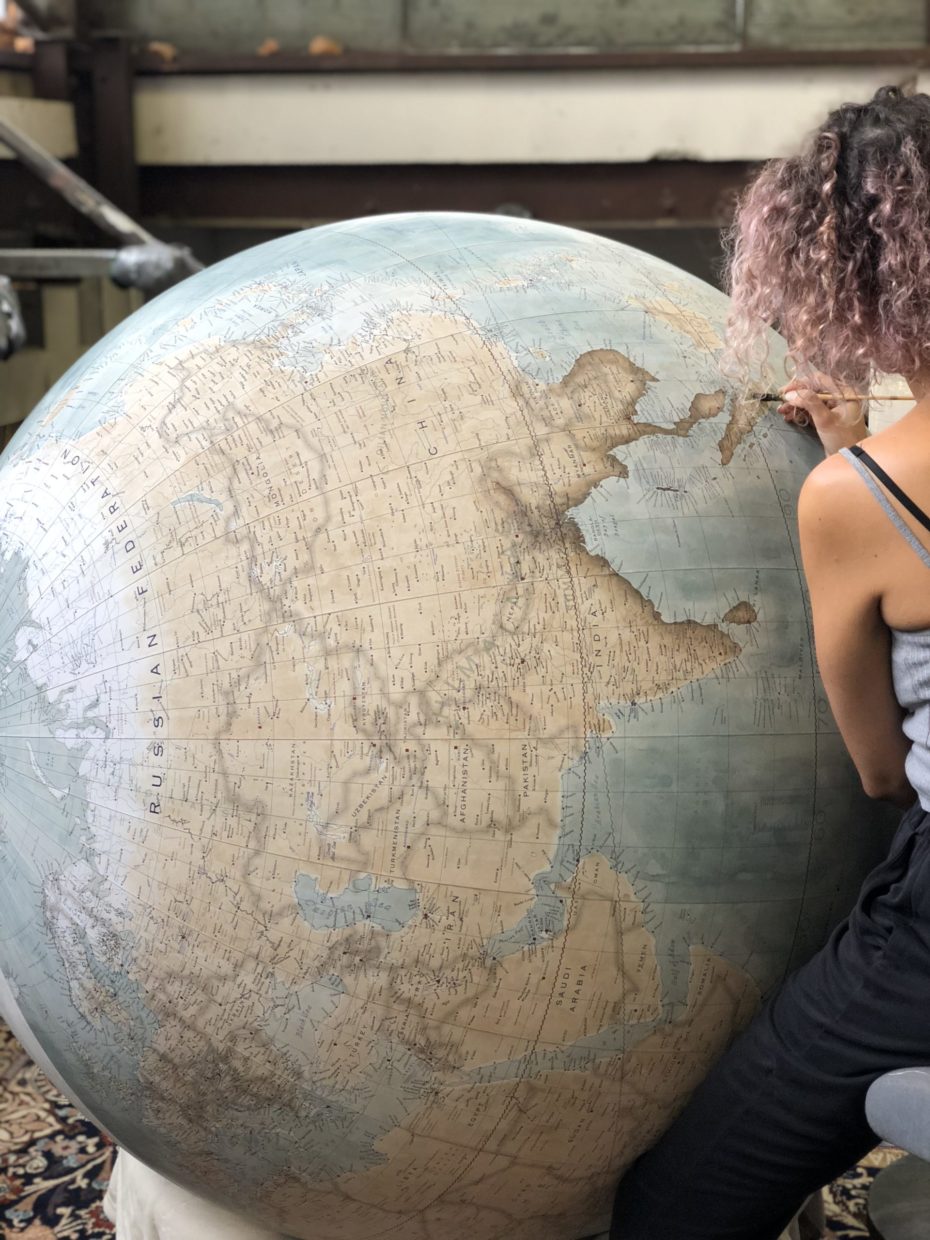
MNC: With things like ice caps melting and borders shifting, how often does that affect your work?
PB: The beauty about our work is it is a historical moment in time. As well as a geographical representation of the world, it is a historical moment. So we actually offer to apply lists – well, not on all our globes, but if people would like them – lists of political leaders and population sizes. We have two full-time cartographers, ordinarily who are updating all the time. We update the ice caps I think once every 18 months. And when countries change and things like that – our changes are immediate. For me that’s really important.
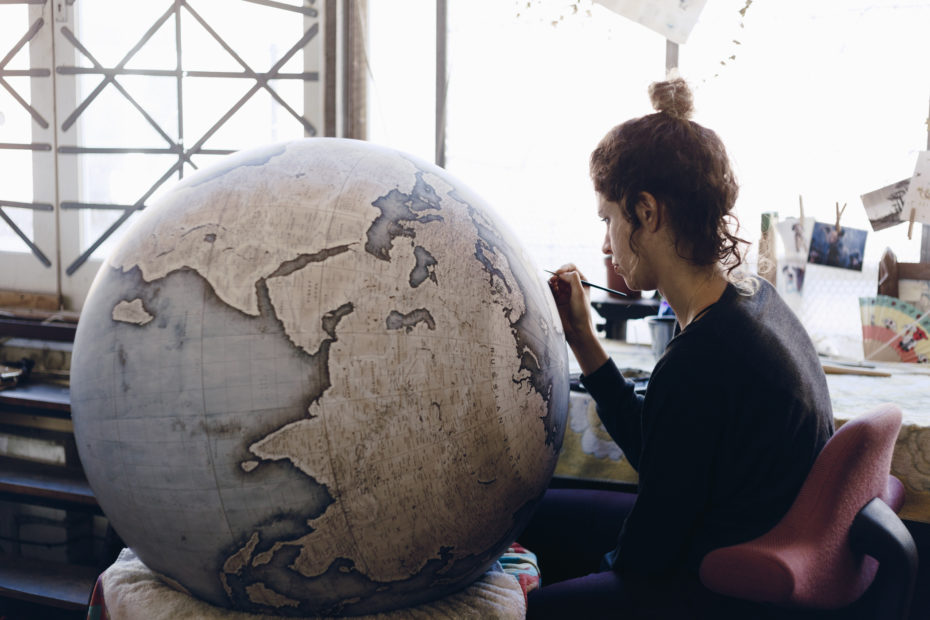
MNC Audience member: Have you received any kickback for including or not including those Nine-dash lines on your globe?
MNC: Hang on…can we explain what that is first?
PB: Sure, I love the explanation of it! I’m going to do it really moronically. Some guy in the 1940s or ‘50s, decided they were going to make a border in the South China Sea – isn’t it? Between China and the various different territories. Rather than just doing a solid line they did some dashes in the ocean. There were nine dashes in this line – that’s why it’s called “The Nine-dash Line” – and it’s the border between China and Japan and the Koreas. It’s a big point of contention. When we ship globes to China, we actually have to change the mapping on Taiwan. Otherwise they just get stuck in customs and then sent back to us.
It is one of those things where we do respect every territory, every individual country’s right to the world as they see it. Jerusalem, on our maps, has always been the capital of Israel because it’s always been recognized internally as the capital. But, other countries don’t necessarily recognize it so it’s kind of a slightly sitting on the fence situation. For a globe to go into China, we need to have Taipei as just a regular city name. For it to go into Taiwan, obviously, it would be the opposite. We respect those views without trying to make any political statement about it.
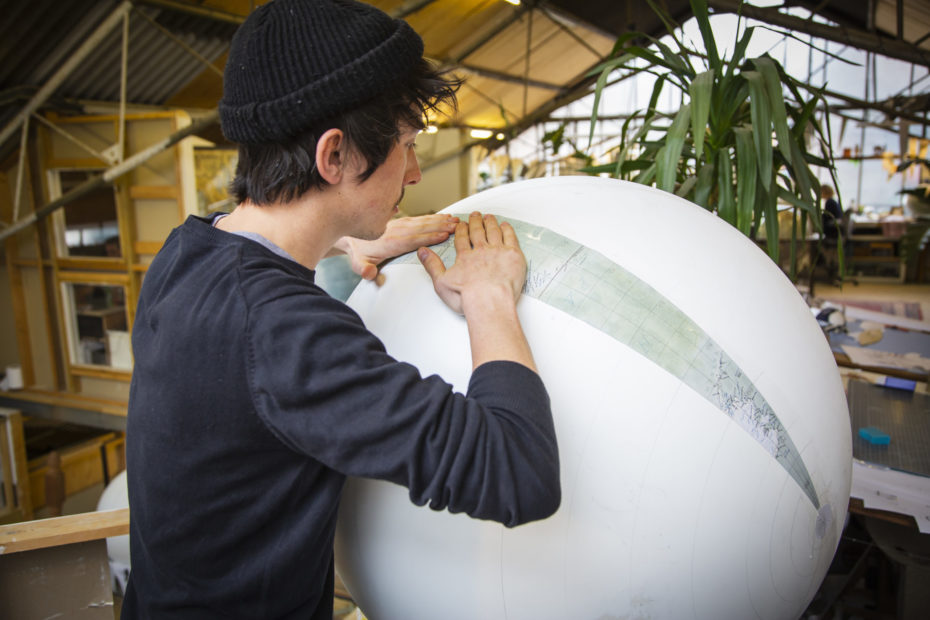
MNC: What do you have to say to flat earthers?
PB: Funny, we were jokingly watching [prominent flat earther] David Icke getting interviewed last night. I think that to flat earthers I would tend to say, “go back to school.” I can’t really have a serious conversation with someone who has so little grasp of the facts of physics…I’ve watched programs on them and the guy who’s the head honcho of them in America, he just likes the sound of his own voice. I don’t think he even cares if the earth is flat or not, he just likes the sound of his own voice and having people film him. They’re not nutters, that’s fair to say. But even after they have proven with their own experiments that the earth is round, they still can’t quite believe it – so I don’t know really what you can say, if someone won’t believe what’s staring them in the face. But everyone’s allowed to have their own viewpoint. That’s the crucial thing about this, you can’t tell people what to believe. It’s a free world.
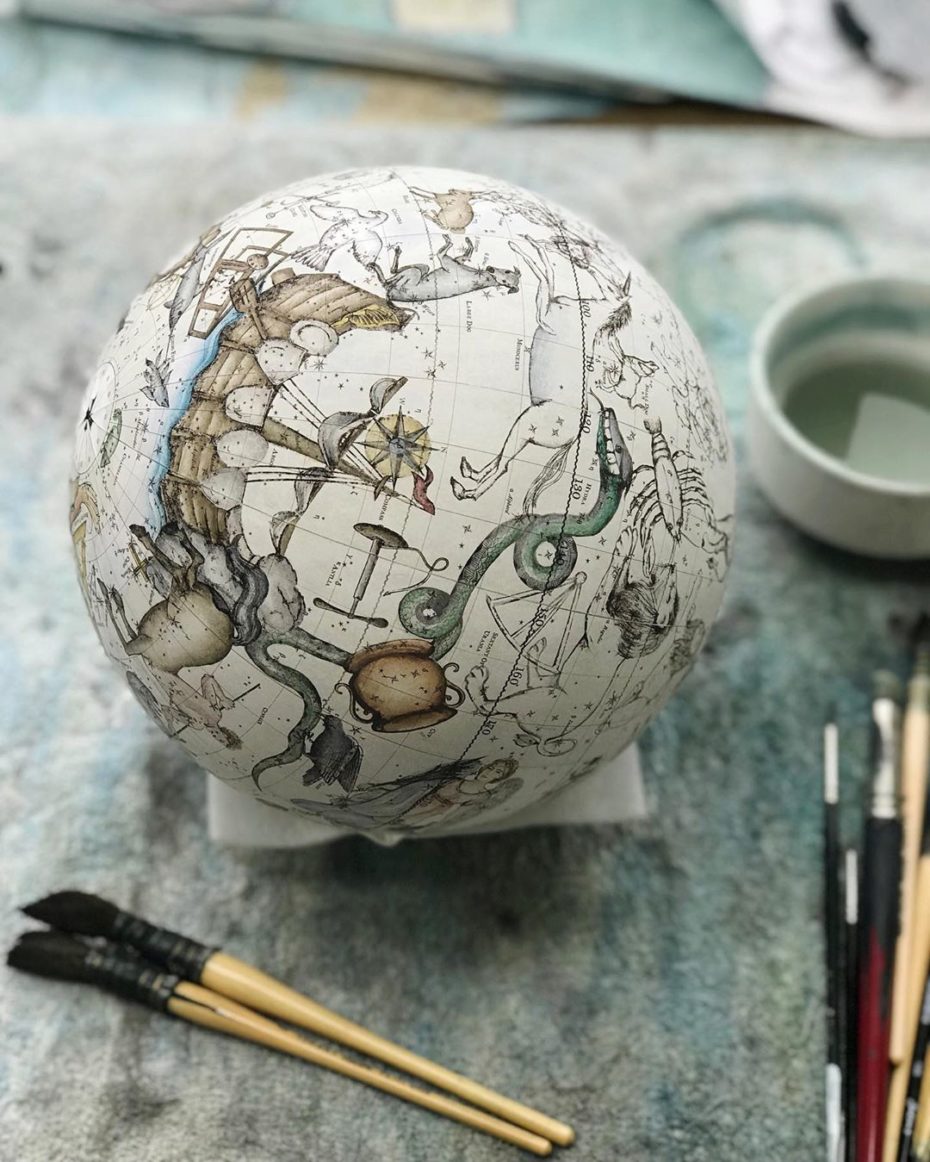
MNC: We’re big fans of medieval monsters at MNC – are there any we can spot on your globes?
PB: We have our Celestial Globe here, which has a number of mythical creatures. Even the ones that aren’t mythical are mythical in shape. Over the centuries, on different celestial globes, monsters have been depicted in so many different ways. A lot of the globes we make have illustrations in the oceans. People obviously love having whales in the oceans and having sailboats and things like that.
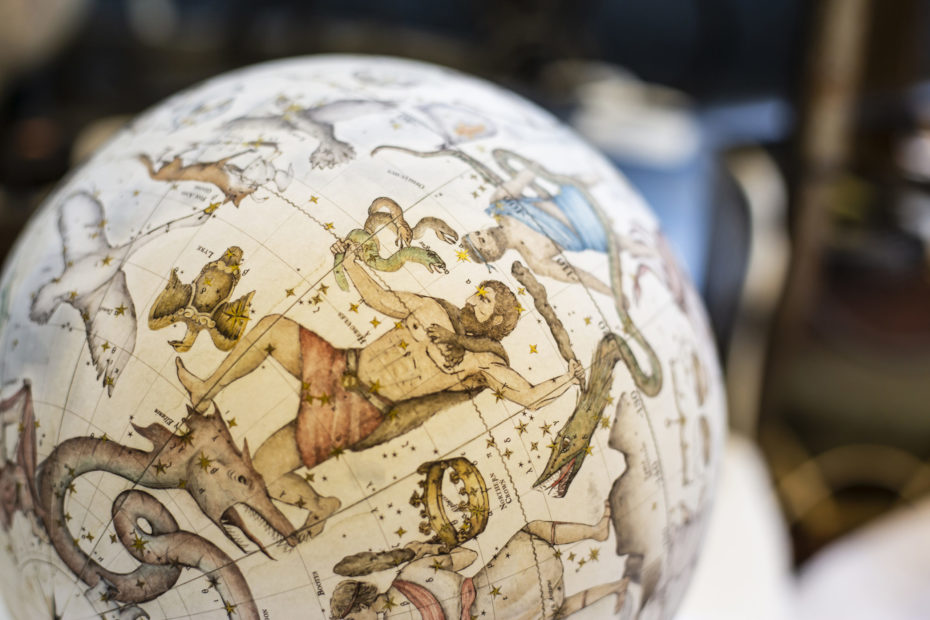
MNC Audience Member: What kind of scaling challenges do you have with globemaking, in terms of making sure the countries and everything are to scale? Is some of it up to interpretation??
PB: The countries are all to scale. That’s the beauty about the globe, it’s the only real representation of the world that exists. Every single projection that’s on the wall is a distortion. Incorrect by virtue of the fact that bits have had to be filled in in between the little slices.
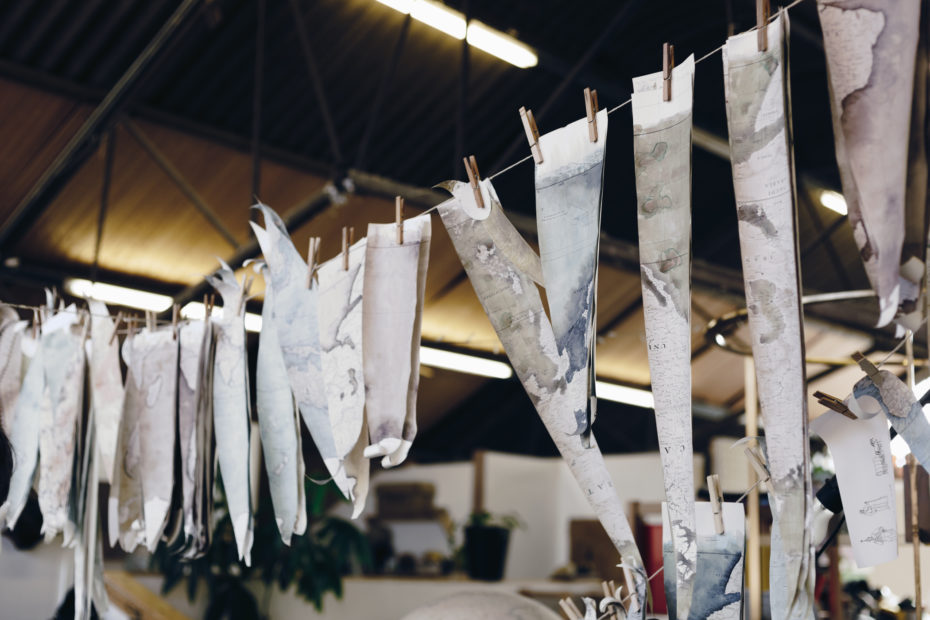
MNC: How do you achieve that perfection?
PB: There are a lot of secrets that can’t leave the building, but when people train here they spend nine months to a year working out how to make the smallest globe, to make sure every single country and latitude line match up perfectly. There is kind of a formula you use every time you scale to a different size globe, to increase the size of the map, but there are so many other factors in play. We have a team of six of us now who actually apply the bits of map to the sphere, and they all have incredible experience. The best people out there who can make globes are all in here.
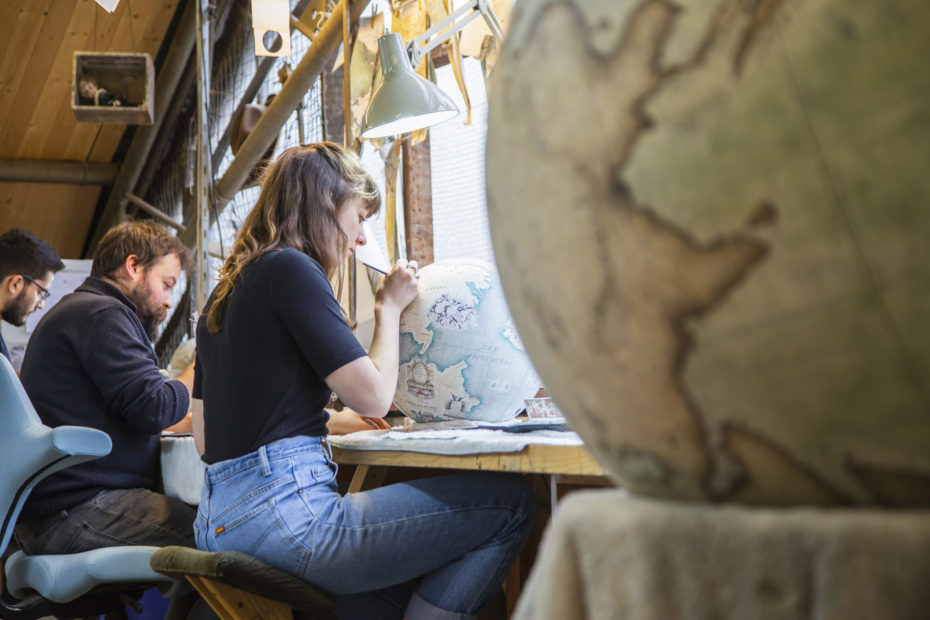
MNC: When you take on a new employee, is the plan pretty much that they’re going to be there for life? Artisanal jobs tend to be very long term.
PB: Our retention is probably in the top 5% of companies. We’re all very happy here, that team morale is important to me. We all went to Morocco for a long weekend together last year. I’m keen that everyone who’s with us stays as long as possible, and if they want to leave…I’ll just chain them to their seats until they change their mind!
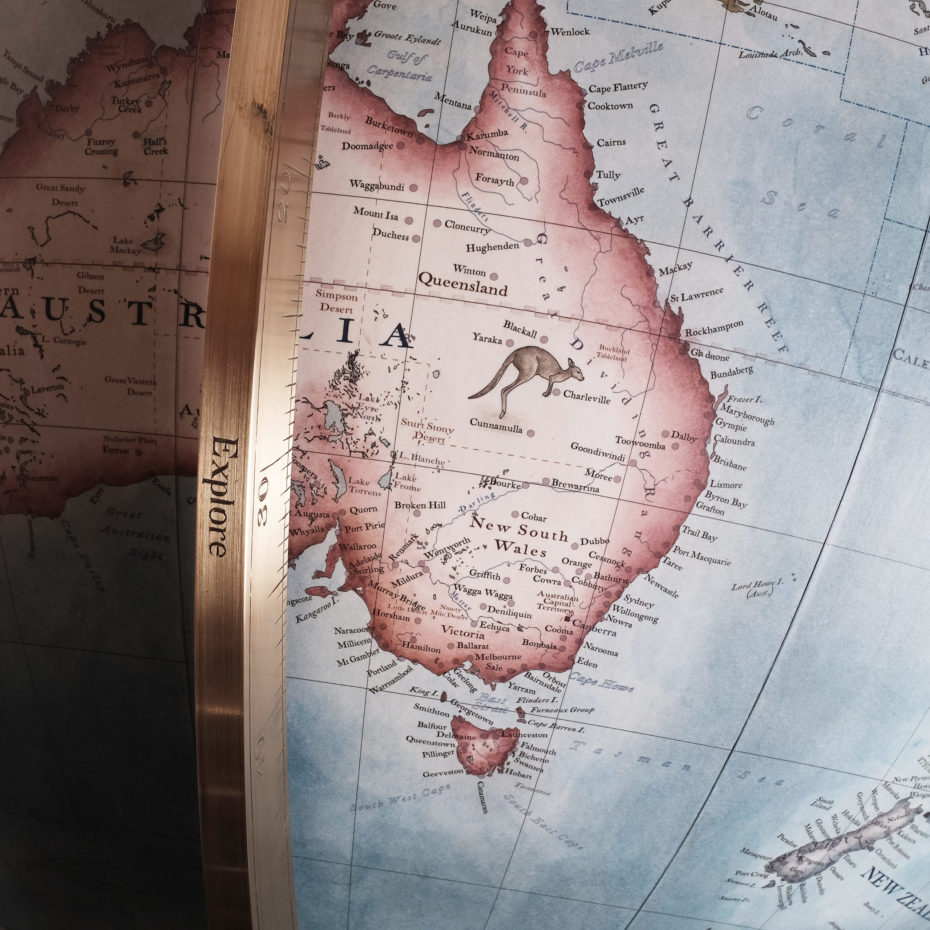
MNC Audience Member: How do you choose what type faces to letter on the globes?
PB: So at the outset, at this stage in development, I was in a shop a couple of streets south of here. I was playing around with fonts and not really happy with them and then one day an elderly gentleman – and because it was a shop, and I was doing such an usual thing, he knocked on the window one night and said, “I’ve been watching what you’ve been doing, I think I might be able to help you.” It turns out he ran a printing library from 1960 to 2001. He’s the leading font guy in the world – writes books on it, lectures on it. And he lent us his font to use on all our globes, which is called “Brittania.”
It’s not publicly available. We use that on a lot of our globes. We use others as well but that’s the main one we go to. It really works quite well.
MNC Audience member: How did your own background and interests prepare you for globemaking?
PB: I think I was very lucky. I was in my forties when I started it, and I had quite a bit experience in art and construction. I actually have experience learning how to make violins, though I realized I didn’t have the patience required for it. I remember when they introduced me to a “thumb plane,” which is a little plane the size of a thumb for scraping wood shavings so fine, you can barely see them. Whilst you need an awful lot of patience for globe making, I think that – as well as restoration – requires patience on another level.
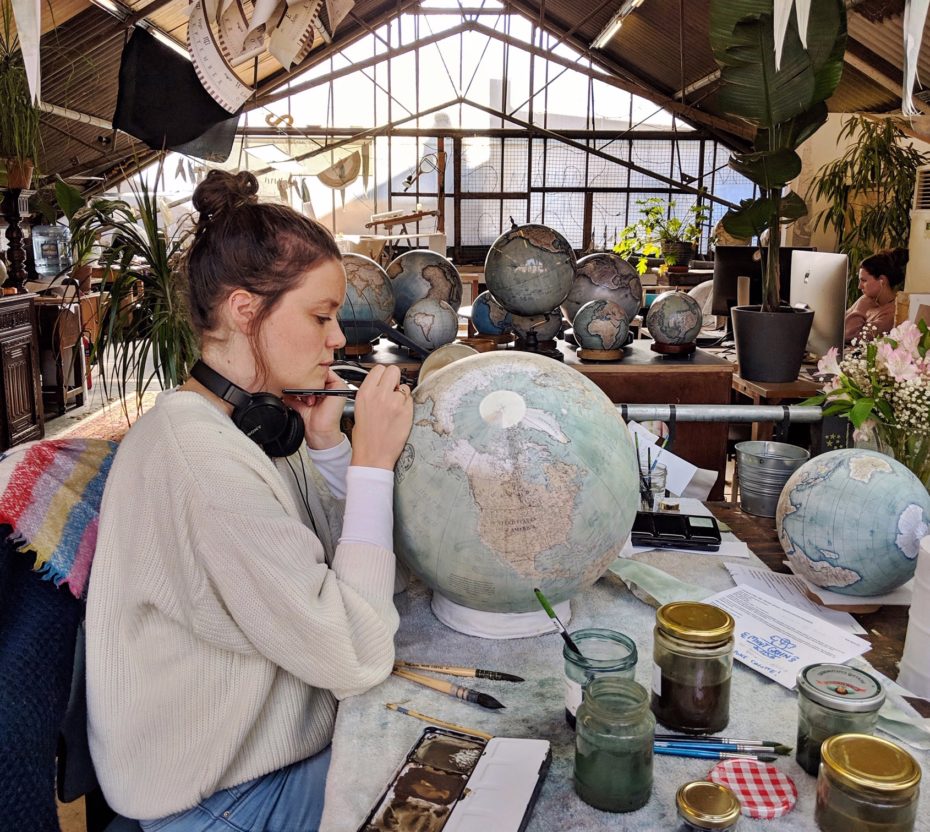
MNC: What have globes taught you about travel?
PB: It’s a strange thing, really. I suppose when I look at the globe, one of the things I often think about is why I’ve never been to the Caribbean? Why I’ve seen so little of South America? Why I go out to India and Southeast Asia a lot?
I’d have to think about that question. It definitely inspires me to want to go to different places. I love ad-hoc travelling, where you don’t have your destination, necessarily, or everything planned out. You just sort of set off…
Learn more about Bellerby & Co. on their website and Instagram. Cheers, and see you next week!
This interview has been shortened and edited for clarity




